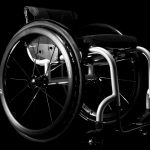The Spinal Cord Injury Rehabilitation Evidence (SCIRE) project in Canada has published a raft of useful information on osteoporosis after a spinal cord injury (SCI). This blog post highlights the key points.
Osteoporosis is a condition in which the bones become less dense, changing the bone structure and making the bones more likely to break. Osteoporosis often affects people with SCI in a unique pattern called sublesional osteoporosis. This is a condition which involves:
- Excessive bone resorption below the level of injury
- Low bone mineral density of the hip and or knee regions
- An increased risk of fracture
Bone tissues start to breakdown as early as the first few days after SCI. Among people with motor complete (damage to the spinal cord resulting in total loss of motor function below the level of injury). SCI, bone tissue resorption is highest between 3 and 6 months after injury and may continue for years.
The rate of decline in bone density is less predictable in people with incomplete or non-traumatic SCI. Osteoporosis is very common in people living with SCI long-term and increases the risk for fragility fractures.
Why does osteoporosis occur after SCI?
Spinal cord injury can affect the body in a number of different ways that contribute to osteoporosis. These changes may include:
- Changes to body systems – SCI affects many different systems in the body. Changes in the immune, hormone, circulatory and nervous systems after SCI contribute to weaker bones after SCI. The role of these factors is not fully understood.
- Fewer weight-bearing activities – Weight-bearing activities, like standing and walking, place forces through the bones of the legs and hips that stimulate the bones to become stronger. When a person spends less time standing and more time sitting, the bones experience fewer forces and adapt by becoming less dense and weaker.
- Reduced muscle activity – Because muscles are connected to bones by tendons, the repeated pulling of muscles on bones during movement stimulates the bones to become stronger. When muscles become weak or paralysed, the muscles atrophy and the muscles and bones nearby have fat deposited in them and there are not as many forces applied to the bones.
- Lifestyle changes – Physical activity and nutritional habits can also influence the bones. After SCI, rates of physical activity, which can help to strengthen bone, are often lower than in people without SCI. In addition, changes in nutritional habits, such as reduced calcium and vitamin D intake can also contribute to low bone density after SCI.
Read more about osteoporosis and SCI on the SCIRE Web site






Recent Comments